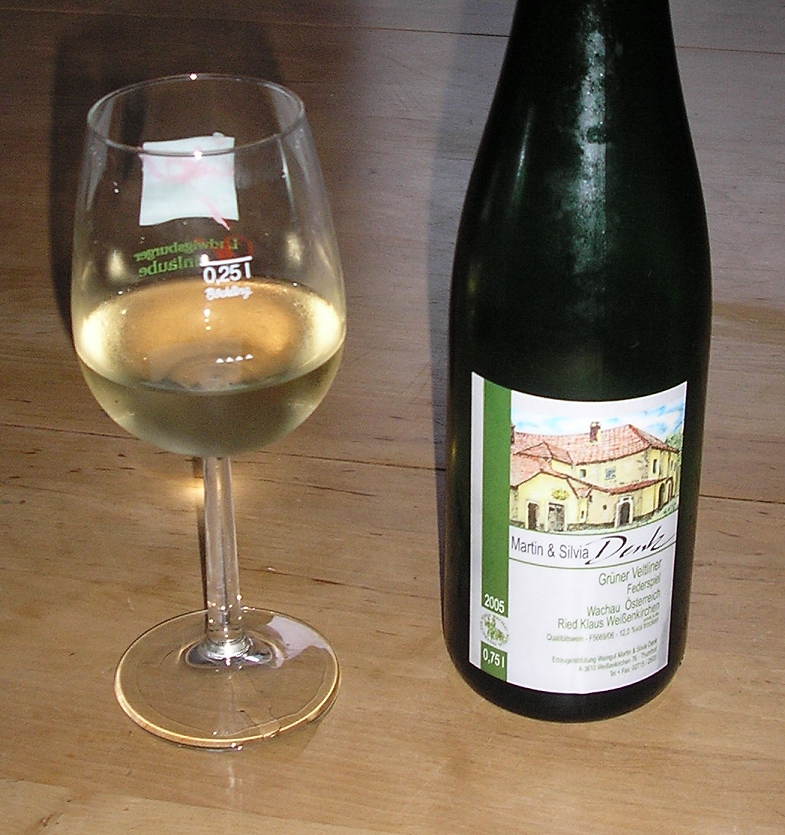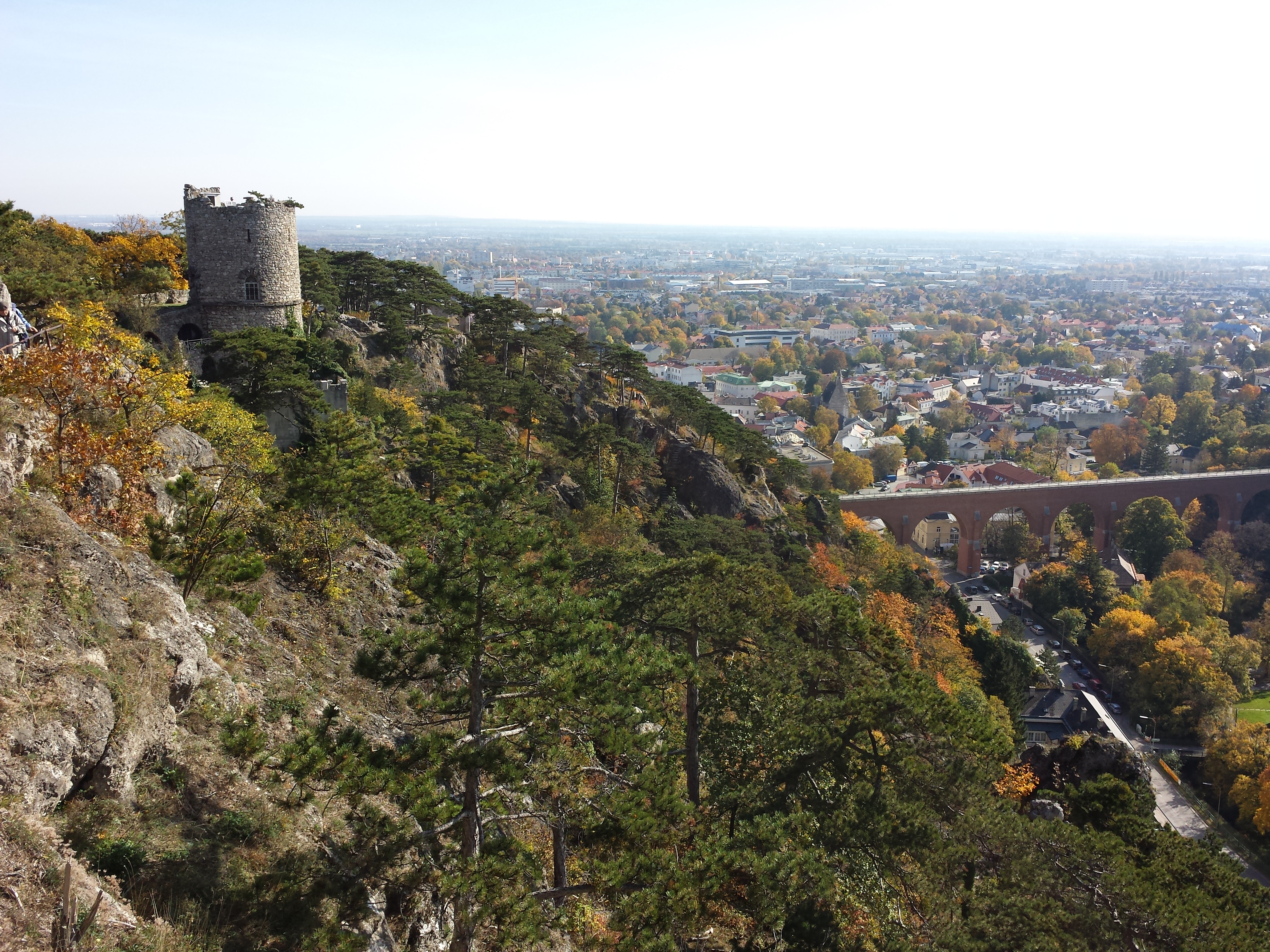|
Gumpoldskirchen
Gumpoldskirchen (Central Bavarian: ''Gumpoidskiachn'') is a town in the district of Mödling in the Austrian state of Lower Austria. Gumpoldskirchen borders on the municipalities Mödling, Guntramsdorf, Gaaden, Pfaffstätten and Traiskirchen. The municipal area extends from the flats in the Vienna Basin to forest areas of the Anninger in the Vienna Woods. Gumpoldskirchen is very famous for its wine, especially its Spätrot-Rotgipfler blend, and "Heurigers" as it attracts many tourists from Vienna to its hillside vineyards. Gumpoldskirchen derives its name from Gumpold of Passau. Climate Gumpoldskirchen has a mild, continental climate attributed to its proximity to the spa line in Austria. The nearby Vienna Woods directly to the west affect the climate as well. There are 250 weather stations for the Central Institute for Meteorology and Geodynamics that call Gumpoldskirchen home. History The Stone Age people settled the area about 6500 years ago. The Romans then settled in the ar ... [...More Info...] [...Related Items...] OR: [Wikipedia] [Google] [Baidu] |
Mödling (district)
Mödling () is the capital of the Austrian district of the same name located approximately 14 km south of Vienna. Mödling lies in Lower Austria's industrial zone (Industrieviertel). The Mödlingbach, a brook which rises in the Vienna Woods, flows through the town. Near Achau it joins with the Schwechat. Woodland occupies a large part of the municipality, part of the Föhrenberge ('Pine Mountains'). Located immediately south of Vienna, and within the boundaries of the district of Mödling, is one of the largest shopping centres in Europe: Shopping City Süd (SCS). Geography Grapes are grown on the slopes of the Wienerwald; the area is called ''Thermenregion'', where one can find much ''Heurigen'' (the most recent year's wine). Wiener Neudorf to the east, and Maria Enzersdorf to the north, merge directly into Mödling. South of Mödling is Gumpoldskirchen, separated by the Eichkogel with its very special flora. In the west a narrow street runs through Vorderbrühl, form ... [...More Info...] [...Related Items...] OR: [Wikipedia] [Google] [Baidu] |
Spätrot-Rotgipfler
Spätrot-Rotgipfler is a wine produced in the Thermenregion in Austria, particularly in the Gumpoldskirchen district. It is a blend of the two varieties Zierfandler (synonym: Spätrot) and Rotgipfler. Zierfandler is said to contribute finesse, while Rotgipfler contributes with strength and a higher alcohol, and the wine often has asparagus Asparagus, or garden asparagus, folk name sparrow grass, scientific name ''Asparagus officinalis'', is a perennial flowering plant species in the genus '' Asparagus''. Its young shoots are used as a spring vegetable. It was once classified in ... aromas. accessed on January 22, 2013 Spätrot-Rotgipfler is often produced as Prädikatswein ... [...More Info...] [...Related Items...] OR: [Wikipedia] [Google] [Baidu] |
Austrian Wine
Austrian wines are mostly dry white wines (often made from the Grüner Veltliner grape), though some sweeter white wines (such as dessert wines made around the Neusiedler See) are also produced. About 30% of the wines are red, made from Blaufränkisch (also known as Lemberger, or as Kékfrankos in neighbouring Hungary), Pinot noir and locally bred varieties such as Zweigelt. Four thousand years of winemaking history counted for little after the " antifreeze scandal" of 1985, when it was revealed that some wine brokers had been adulterating their wines with diethylene glycol. The scandal destroyed the market for Austrian wine and compelled Austria to tackle low standards of bulk wine production, and reposition itself as a producer of quality wines. The country is also home to Riedel, makers of some of the most expensive wine glasses in the world. Some of the best producers of Austria include Weingut Bründlmayer, Weingut F.X. Pichler and Weingut Franz Hirtzberger, Weingut Hu ... [...More Info...] [...Related Items...] OR: [Wikipedia] [Google] [Baidu] |
Mödling
Mödling () is the capital of the Austrian Mödling (district), district of the same name located approximately 14 km south of Vienna. Mödling lies in Lower Austria's industrial zone (Industrieviertel). The Mödlingbach, a brook which rises in the Vienna Woods, flows through the town. Near Achau it joins with the Schwechat. Woodland occupies a large part of the municipality, part of the Föhrenberge ('Pine Mountains'). Located immediately south of Vienna, and within the boundaries of the district of Mödling, is one of the largest shopping centres in Europe: Shopping City Süd (SCS). Geography Grapes are grown on the slopes of the Wienerwald; the area is called ''Thermenregion'', where one can find much ''Heurigen'' (the most recent year's wine). Wiener Neudorf to the east, and Maria Enzersdorf to the north, merge directly into Mödling. South of Mödling is Gumpoldskirchen, separated by the Eichkogel with its very special flora. In the west a narrow street runs throug ... [...More Info...] [...Related Items...] OR: [Wikipedia] [Google] [Baidu] |
Gaaden
Gaaden (Central Bavarian: ''Goodn'') is a town in the district of Mödling in the Austrian state of Lower Austria Lower Austria (german: Niederösterreich; Austro-Bavarian: ''Niedaöstareich'', ''Niedaestareich'') is one of the nine states of Austria, located in the northeastern corner of the country. Since 1986, the capital of Lower Austria has been Sankt P .... Geography Gaaden lies in the northern Vienna woods at the foot of the Anninger. Population References Cities and towns in Mödling District {{LowerAustria-geo-stub ... [...More Info...] [...Related Items...] OR: [Wikipedia] [Google] [Baidu] |
Teutonic Order
The Order of Brothers of the German House of Saint Mary in Jerusalem, commonly known as the Teutonic Order, is a Catholic religious institution founded as a military society in Acre, Kingdom of Jerusalem. It was formed to aid Christians on their pilgrimages to the Holy Land and to establish hospitals. Its members have commonly been known as the Teutonic Knights, having a small voluntary and mercenary military membership, serving as a crusading military order for the protection of Christians in the Holy Land and the Baltics during the Middle Ages. Purely religious since 1810, the Teutonic Order still confers limited honorary knighthoods. The Bailiwick of Utrecht of the Teutonic Order, a Protestant chivalric order, is descended from the same medieval military order and also continues to award knighthoods and perform charitable work. Name The name of the Order of Brothers of the German House of Saint Mary in Jerusalem is in german: Orden der Brüder vom Deutschen Haus der He ... [...More Info...] [...Related Items...] OR: [Wikipedia] [Google] [Baidu] |
Gothic Architecture
Gothic architecture (or pointed architecture) is an architectural style that was prevalent in Europe from the late 12th to the 16th century, during the High and Late Middle Ages, surviving into the 17th and 18th centuries in some areas. It evolved from Romanesque architecture and was succeeded by Renaissance architecture. It originated in the Île-de-France and Picardy regions of northern France. The style at the time was sometimes known as ''opus Francigenum'' (lit. French work); the term ''Gothic'' was first applied contemptuously during the later Renaissance, by those ambitious to revive the architecture of classical antiquity. The defining design element of Gothic architecture is the pointed or ogival arch. The use of the pointed arch in turn led to the development of the pointed rib vault and flying buttresses, combined with elaborate tracery and stained glass windows. At the Abbey of Saint-Denis, near Paris, the choir was reconstructed between 1140 and 1144, draw ... [...More Info...] [...Related Items...] OR: [Wikipedia] [Google] [Baidu] |
1985 Diethylene Glycol Wine Scandal
The 1985 diethylene glycol wine scandal () was an incident in which several Austrian wineries illegally adulterated their wines using the toxic substance diethylene glycol (a minor ingredient in some brands of antifreeze) to make the wines appear sweeter and more full-bodied in the style of late harvest wines.Sonntagsblitz, July 10, 2005: ''Im Wein war nicht nur Wahrheit'' ("In wine was not only truth") Many of these s were exported to , some of them in bulk to be bottled at large-scale West German |
6th Panzer Army
The 6th Panzer Army (german: 6. Panzerarmee) was a formation of the German Army, formed in the autumn of 1944. The 6th Panzer Army was first used as an offensive force during the Battle of the Bulge, in which it operated as the northernmost element of the German offensive. The army was subsequently transferred to Hungary in early 1945 and used in both offensive and defensive actions there. The final battles of the 6th Panzer Army were fought in Austria, preventing its fall to Soviet forces. The remnants of the army eventually surrendered to the United States Army. The army's commander throughout its existence, SS-'' Oberstgruppenführer'' Josef Dietrich said in early 1945: We call ourselves the "6th Panzer Army", because we've only got 6 Panzers left. . Unit history The 6th Panzer Army is best noted for its leading role in the Battle of the Bulge (December 16, 1944 – January 25, 1945). Although it never received an SS designation, calling it the ''6th SS Panzer Army'' came ... [...More Info...] [...Related Items...] OR: [Wikipedia] [Google] [Baidu] |
World War II
World War II or the Second World War, often abbreviated as WWII or WW2, was a world war that lasted from 1939 to 1945. It involved the vast majority of the world's countries—including all of the great powers—forming two opposing military alliances: the Allies and the Axis powers. World War II was a total war that directly involved more than 100 million personnel from more than 30 countries. The major participants in the war threw their entire economic, industrial, and scientific capabilities behind the war effort, blurring the distinction between civilian and military resources. Aircraft played a major role in the conflict, enabling the strategic bombing of population centres and deploying the only two nuclear weapons ever used in war. World War II was by far the deadliest conflict in human history; it resulted in 70 to 85 million fatalities, mostly among civilians. Tens of millions died due to genocides (including the Holocaust), starvation, ma ... [...More Info...] [...Related Items...] OR: [Wikipedia] [Google] [Baidu] |
Nazis
Nazism ( ; german: Nazismus), the common name in English for National Socialism (german: Nationalsozialismus, ), is the far-right totalitarian political ideology and practices associated with Adolf Hitler and the Nazi Party (NSDAP) in Nazi Germany. During Hitler's rise to power in 1930s Europe, it was frequently referred to as Hitlerism (german: Hitlerfaschismus). The later related term "neo-Nazism" is applied to other far-right groups with similar ideas which formed after the Second World War. Nazism is a form of fascism, with disdain for liberal democracy and the parliamentary system. It incorporates a dictatorship, fervent antisemitism, anti-communism, scientific racism, and the use of eugenics into its creed. Its extreme nationalism originated in pan-Germanism and the ethno-nationalist '' Völkisch'' movement which had been a prominent aspect of German nationalism since the late 19th century, and it was strongly influenced by the paramilitary groups that emerged af ... [...More Info...] [...Related Items...] OR: [Wikipedia] [Google] [Baidu] |
Anschluss
The (, or , ), also known as the (, en, Annexation of Austria), was the annexation of the Federal State of Austria into the German Reich on 13 March 1938. The idea of an (a united Austria and Germany that would form a " Greater Germany") began after the unification of Germany excluded Austria and the German Austrians from the Prussian-dominated German Empire in 1871. Following the end of World War I with the fall of the Austro-Hungarian Empire, in 1918, the newly formed Republic of German-Austria attempted to form a union with Germany, but the Treaty of Saint Germain (10 September 1919) and the Treaty of Versailles (28 June 1919) forbade both the union and the continued use of the name "German-Austria" (); and stripped Austria of some of its territories, such as the Sudetenland. Prior to the , there had been strong support in both Austria and Germany for unification of the two countries. In the immediate aftermath of the dissolution of the Habsburg monarchy—with ... [...More Info...] [...Related Items...] OR: [Wikipedia] [Google] [Baidu] |



.jpg)


